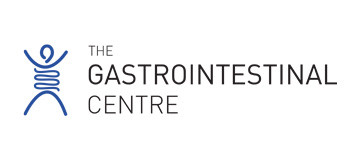CONSENT RFA
What is Oesophageal Radiofrequency Ablation (Halo)?
The Halo procedure is an endoscopic option for the removal of Barrett’s mucosa with
circumferential (HALO360 ) or focal (HALO90) radiofrequency ablation (RFA). The purpose of RFA is to thermally destroy the diseased mucosa via radiofrequency energy, allowing for the re-epithelialisation with healthy squamous epithelium. Radiofrequency ablation treatment is usually provided as a series of 3 separate day procedures (a circumferential followed by 2 focal procedures) performed by Dr Francis under sedation given by an anaesthetist in an outpatient setting.
Blood Thinning Agents:
You must advise The Gastrointestinal Centre at the time of your booking if you are taking any blood thinning medications. This includes aspirin, asasantin, warfarin, plavix, iscover and effient. You will be advised as to whether any changes with these medications are necessary.
Day before Procedure:
No eating or drinking after midnight the day before the procedure.
Arrange to have someone drive you home after the procedure.
If you take aspirin or blood thinning medication, you will receive instructions from your doctor about when to stop taking them before each procedure.
During the Procedure:
During the initial procedure, the exact diameter of the oesophagus is measured using an automated dilation catheter. Then using the proper sized ablation catheter radiofrequency (RF) energy is delivered to a 3 cm circumferential segment of the Barrett’s oesophagus. Delivery of energy is automated and takes a few seconds. The energy is adjusted to allow a limited depth of injury to destroy the Barrett’s cells without destroying the normal tissue in the deeper layer. The ablation may be repeated until the entire length of the Barrett’s segment is treated. On the follow up ablations a radiofrequency catheter the size of a postage stamp is used to focally target any residual Barrett’s mucosa and to re-treat the gastro-oesophageal junction. Typically the procedure itself takes 20-30 minutes, but we ask for you to allow 4 hours total hospital time for pre-procedure preparation and recovery.
After the Procedure:
Patients can suffer chest discomfort and difficulty swallowing for a week or two and some complain of nausea for a few days. These symptoms are usually easily controlled with medications. Patients must stop taking all blood thinners several days before and after the procedure (number of days depends on the type of blood thinner). Patients are advised to stay on clear liquids for 24 hours followed by a soft food diet for up to 2 weeks after the procedure. One in 12 patients needs to be readmitted to hospital for a couple of days in the week after treatment due to difficulties swallowing. This can be resolved after the oesophagus is dilated (stretched) at a further endoscopy. Initial studies show that eradication rates of high-grade dysplasia using Halo radiofrequency ablation are between 75 to 90% although the data are only available for two year follow up. It is essential that while undergoing the series of ablations that maximal dose PPI therapy is maintained to optimise successful results. (20mg twice a day for Pariet, 40mg twice a day for Nexium or Somac).
After the Procedure (con’t):
If you experience any of the following please contact The Gastrointestinal Centre or the hospital where your procedure was performed:
Significant chest pain, difficulty swallowing, fever >39 degrees, bleeding, abdominal pain, difficulty breathing, vomiting, or general concerns. While the procedure is typically well tolerated rare adverse events such as perforation (putting a hole in the oesophagus), and bleeding can occur and prompt medical attention in these rare circumstances is required.
Complications of sedation are uncommon and are usually avoided by continuous monitoring and administering oxygen during the procedure. In patients with severe cardiac or respiratory disease, serious sedation related reactions can occur.
I hereby consent to the use of my personal information for the purposes indicated below:
To assist other medical practitioners or institutions who may treat me in the future but only to the extent necessary to treat the particular condition for which I have consulted The Gastrointestinal Centre. This may include a requirement to forward relevant prior information including anaesthetic records.
To inform next of kin identified in my admission form of the outcome of treatment or to obtain consent to necessary treatment when I am not able to provide such consent.
To enable The Gastrointestinal Centre to provide access to my information to the health fund of which I am a member if requested by the health fund.
To enable The Gastrointestinal Centre to obtain any medical records including pathology and radiology results.
I have read and understand the procedure description overleaf and agree to Radio Frequency Ablation being performed.
NAME: …………………………………………………………(Please print)
SIGNATURE: ………………………………………………………… DATE:………………………
 The Gastrointestinal Centre
The Gastrointestinal Centre